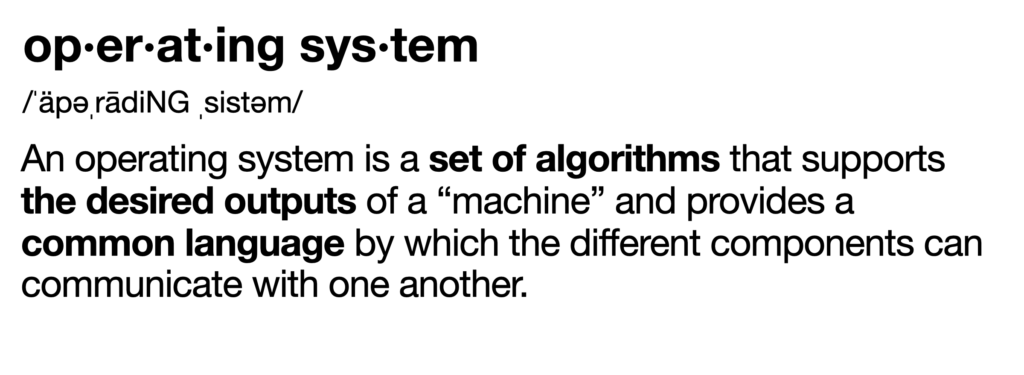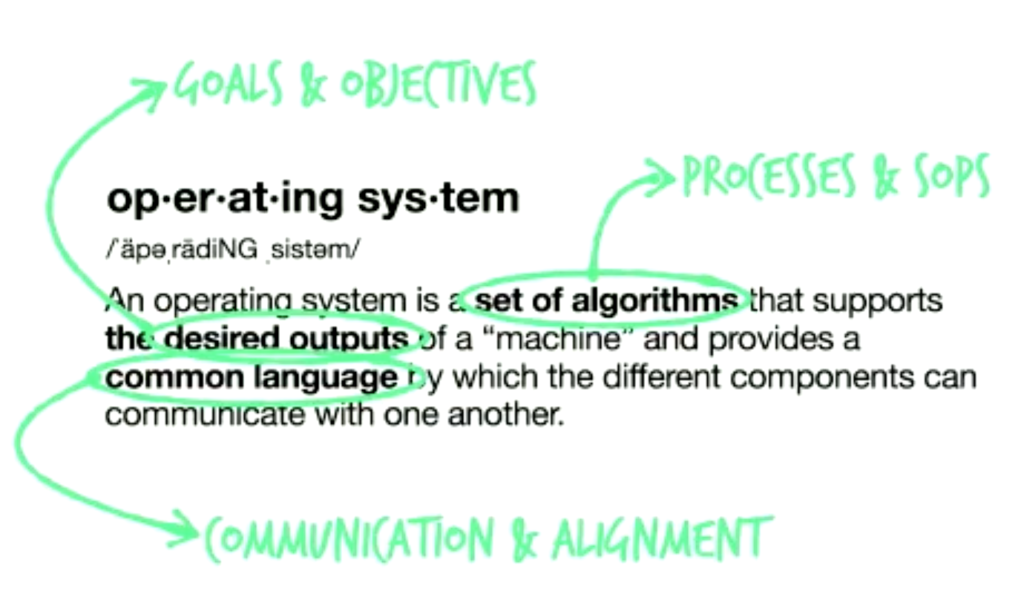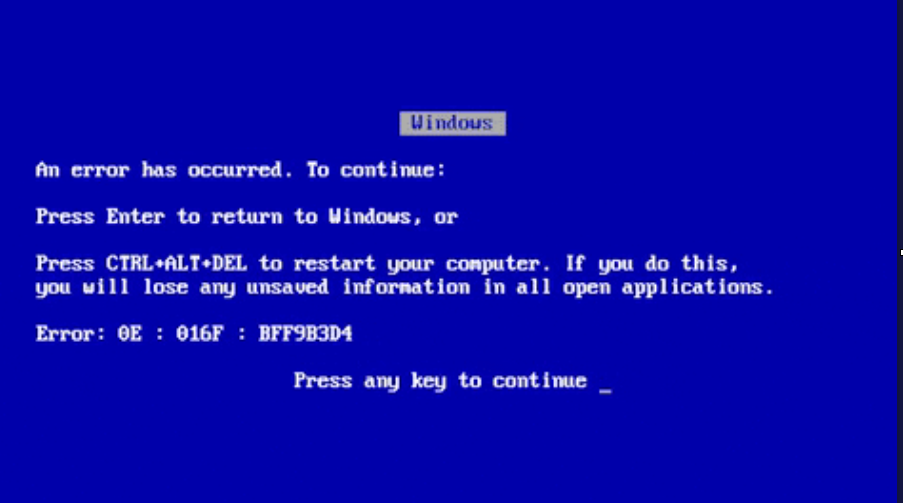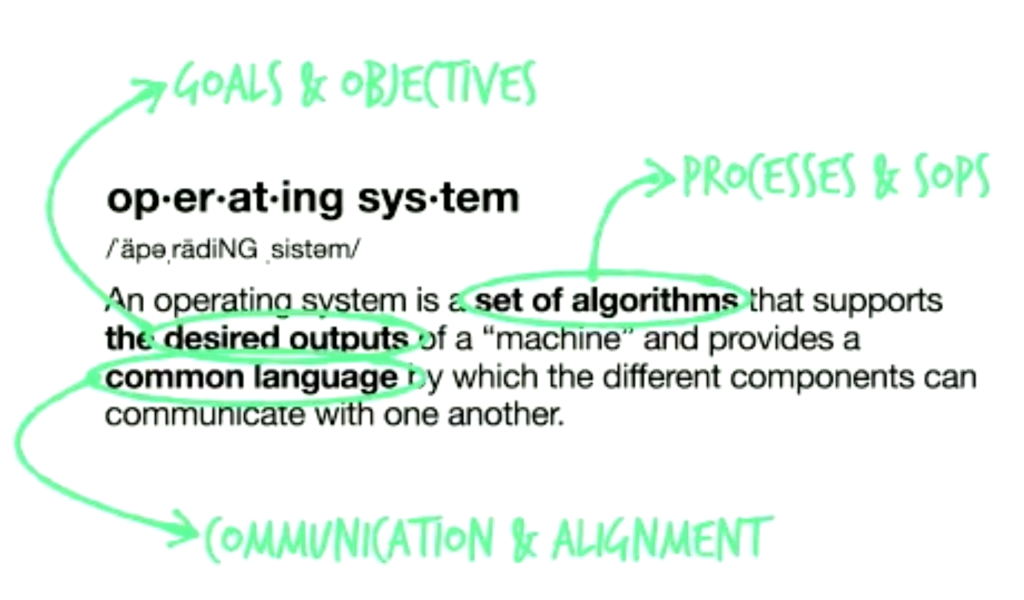Did you know your business has an operating system?
And before you ask, no, I’m not talking about which is better—Mac’s vs. PC’s (but if I were, I’d say Mac 😉).
I’m talking about how you run your business and how some are way better than others.
Because, whether you realize it or not, you have some sort of operating system that keeps your business running day in and day out. It dictates everything from your monthly results to your employee retention rates.
But what exactly is a business operating system—and more importantly, how do you know yours is working?
You’re about to find out…
What Is a Business Operating System (OS)
All of you computer nerds out there should already know what an operating system (abbreviated OS) is, but for those of you who don’t, here’s a great working definition.

But here’s the thing—operating systems aren’t just for machines. Let’s explore how this definition applies to the “operating system” in your business.
That “set of algorithms” in a computer; well, they are just like your business’s processes and procedures. They define how you go about completing activities.
Those “desired outputs” in your business are your goals and objectives (like those monthly KPIs you track and, admittedly, sometimes miss).
And finally, the “common language” that helps everything run smoothly is best described as communication and alignment. These determine how well you work and communicate within and between your teams.
So put it all together, and it looks something like this:

Now, I know what you’re thinking…
“Analogies are cool and all, but who cares? Why is it so important to care about my business operating system? I already have so much to worry about!”
And I hear ya, but you might be surprised to hear that most of those problems you’re experiencing probably stem from a bad OS.

Should You Worry About Your Operating System?
Here come everyone’s two favorite words—it depends.
If your business is in the Launch Zone or the Growth Zone (i.e. you’re just starting out, or you’re still trying to build predictable sales), your operating system is not the biggest priority.
The main focus for you should be getting your feet underneath you and building a strong base of predictable sales.
However, if you’ve got predictable revenue, and you’re starting to see your sales flatten out, you’re entering what’s called the Constraint Zone.
It’s at this stage where your OS can either be your saving grace or your eventual doom…
So, how do you know if your systems are actually preventing you from scaling?
6 Signs Your Operating System Is the Problem
There are 6 red flags that Founders and CEOs run into all the time, and each of them are directly tied to an out-of-date operating system.
- Plans are loosely defined and rarely followed
- Work is chaotic and nothing important ever seems to get done aside from the things that are “on fire”
- Team members need to constantly be told what to do
- Meetings feel like a waste of time
- Profits are low… even on higher sales
- No one seems to know what’s going on!
If any of these complaints hit a bit too close to home, you may have a problem on your hands…
You see, all of these problems stem from doing the same thing over and over again, and expecting different results…
And if you continue on this path, you’ll eventually hit system overload.


So before you drive your business into a wall, stop and ask yourself….
Is your operating system scalable?
You Need a Scalable Operating System
If you want to get past the Constraint Zone and start scaling your business, you need an operating system that can scale with you.
There are 3 specific criteria that an OS needs in order to scale properly…
And guess what… I already told you those 3 criteria!


A Scalable Operating System must:
- Provide Clarity around the company’s vision, mission, values, and goals (also known as the goals and objectives)
- Document and optimize the company’s value creation process and assign clear roles and responsibilities that reinforce team accountability (also known as your processes and SOPs)
- Communicate progress, pivots, and priority shifts in real-time, or as close as possible (also known as communication and alignment)
If your OS can meet these 3 criteria, you’ll be able to overcome any and all objectives and start to scale your business with ease.
So what’s your next step toward scaling your business? Find out if you’re ready for scale. With a strong foundation, there’s no limit to your business’s success.





